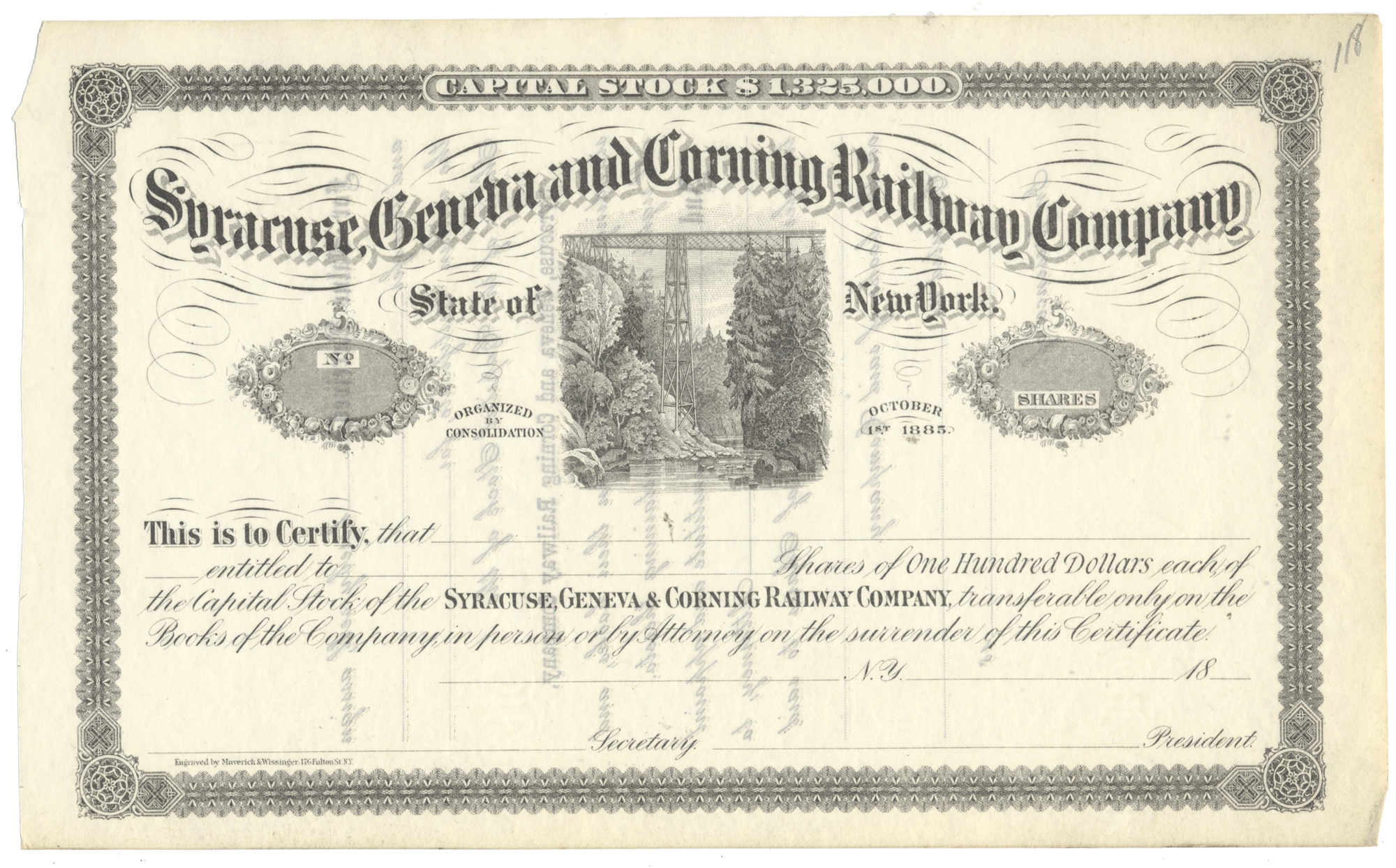Towle Manufacturing Company
- Guaranteed authentic document
- Orders over $75 ship FREE to U. S. addresses
Product Details
CompanyTowle Manufacturing Company
Certificate Type
Capital Stock
Date Issued
1940's
Canceled
Yes
Printer
John A. Lowell Bank Note Company
Signatures
Hand signed
Approximate Size
12 1/8" (w) by 8 1/2" (h)
Images
Representative of the piece you will receive
Guaranteed Authentic
Yes
Additional Details
NA
Historical Context
Scovill traces its history to 1802, when Abel Porter & Company began making metal buttons in a shop on South Main Street. Brothers Lamson and William Scovill bought into the business in 1811, eventually taking it over entirely while continually expanding the product line to include all things made of brass. Several different branches of the company were eventually consolidated when the Scovill brothers incorporated their business as the Scovill Manufacturing Company.
Although Towle Silversmiths was not founded until 1857 (as Towle & Jones) and then 1873 (as A.F. Towle & Son); its progenitors included several members of the Moulton family, whose silversmiths dynasty is claimed to have the longest continuous span of silversmithing of any American family. From father to son, this family produced silversmiths for two hundred years.

In 1637, William Moulton (1615-1664) came together with his two brothers John and Thomas from Norfolk, England, and settled on Winnacunnet Road in Hampton, New Hampshire.
In 1664 his son William Moulton II (1664-1732) was born. In 1682 at the age of 18, William Moulton II left the family farm in Hampton and settled near the Merrimack River in a section of Newbury, Massachusetts that would later become Newburyport. By some accounts, he was the first in six generations of silversmiths. While he did buy and sell silver goods, he was basically a general trader.
His son Joseph Moulton (1694-1750) has also been proposed as the first Moulton to work in silver, but he was actually a blacksmith by trade, though he likely turned his hand to whatever came through his shop door.
Although most of the Moultons carried on their craft in Newburyport, some went to other communities where they established themselves as silversmiths.
The first verified silversmith was William Moulton III (1720–1793). He worked from 1742 to 1762 as a silversmith in Newburyport, Massachusetts, and from 1762 to 1788 in Hampstead, New Hampshire. He then moved in a covered wagon to Marietta, Ohio, carrying his silversmith's tools with him. He was one of the forty-eight pioneers to settle in the Northwest Territory, and is considered one of its founders.
His son, Joseph Moulton (1744–1816), the fourth in line, worked from about 1764 to 1810 as a silversmith in Newburyport, with home and shop on State Street. He had four sons that were silversmiths. 1) Ebenezer moved to Boston. 2) Enoch moved to Portland, Maine, each of them continuing their crafts in their respective places. 3) Abel inherited his father's business in Newburyport.
His son William Moulton IV (1772–1861) was the fifth in line of the Moulton chain. He established his own shop in the same place.
William had two apprentices, Anthony Francis Towle and William P. Jones.
He worked from 1795 to 1845 as a silversmith in Newburyport, Massachusetts. In addition to supplying well-crafted church silver and other vessels, he made jewelry in his shop on Merrimack Street.
His son, Joseph Moulton (1814–1903), the sixth and final in line, was the one that sold the silver business he inherited, to his father’s two apprentices, Anthony Francis Towle and William P. Jones (who were also his apprentices), in 1857 to form Towle & Jones, Co. In 1873, the son of Anthony Francis Towle, Edward Bass Towle, was added to the business, and the name was changed to A.F. Towle & Son. It was in business through 1902, at which point their dies were purchased by Rogers, Lunt and Bowlen, who were later to become Lunt Silversmiths.
In 1882, Anthony Francis Towle, while still owning A.F. Towle & Son, established the Towle Manufacturing Co.
In 1890, the company adopted the trademark of a large script "T" enclosed by a lion. Richard Dimes, an English silversmith who had immigrated to the U.S. in 1881, started Towle's hollowware line. Dimes, who also worked for the Frank W. Smith Silver Co., would eventually establish his own company, Richard Dimes Co., in Boston.
Eventually the company's name was changed to Towle Silversmiths.
Over the years, Towle has created numerous sterling silver flatware patterns in the United States: including the "Candlelight" in 1934, the "Marie Louise" in 1939 which became the official sterling silver pattern for U.S. embassies worldwide, "Old Master" in 1942, now considered by some to be the company’s flagship pattern, and the "Contour" in 1950 (designed by Robert J. King, patented by John Van Koert) which was the first American sterling pattern to manifest post-World War II organic modernist design and the only production-line American flatware included in the Museum of Modern Art's Good Design exhibitions.
In 1990, Towle Silversmiths was acquired by the holding company Syratech Inc., that also owned Wallace Silversmiths and the International Silver Co. In 2006, Lifetime Brands Inc. purchased Syratech Inc.; thereby acquiring Towle Silversmiths, as well as Wallace Silversmiths and International Silver Co.
Related Collections
Additional Information
Certificates carry no value on any of today's financial indexes and no transfer of ownership is implied. All items offered are collectible in nature only. So, you can frame them, but you can't cash them in!
All of our pieces are original - we do not sell reproductions. If you ever find out that one of our pieces is not authentic, you may return it for a full refund of the purchase price and any associated shipping charges.











